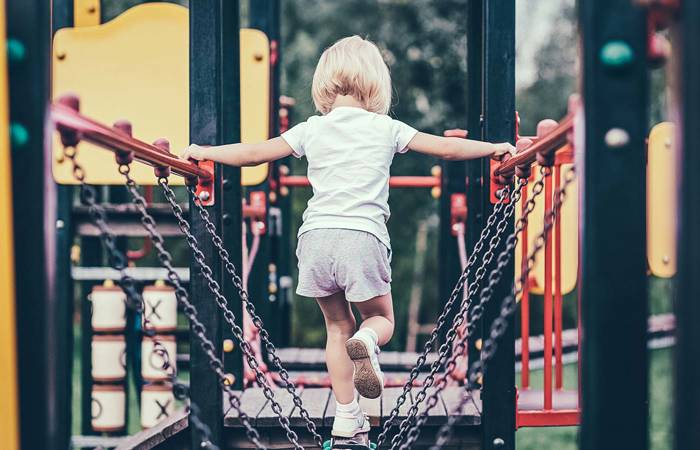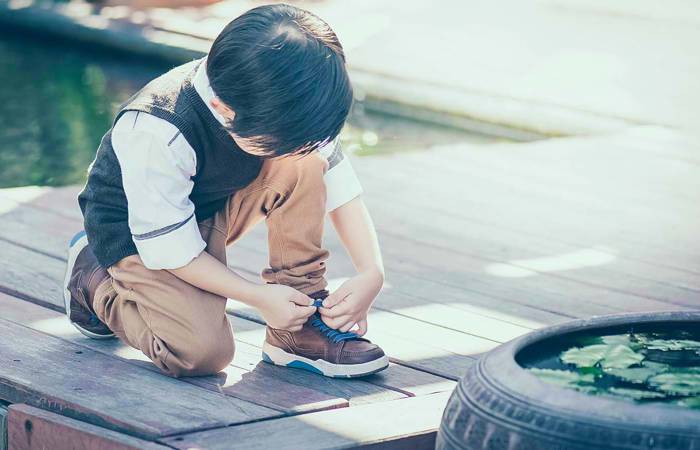Like what you see?
Sign up to receive more free parenting advice.
Thank you for subscribing to our newsletter!
Child Development

Credit: iStock.com/FatCamera
Crawling is one of those milestones that assures parents that their baby’s development is nothing to worry about, however some parents find themselves worrying about why their baby isn’t crawling yet.
“Every baby is different, with some babies crawling for a short time, some for many months and others not crawling at all,” says Associate Professor Alicia Spittle.
“There is a wide range of typical development with most babies crawling between five to 11 months,” says Associate Professor Spittle who is an Australia Physiotherapist Association (APA) Physiotherapist and Research Fellow from University of Melbourne, Murdoch Children's Research Institute and the Royal Women's Hospital.
What’s ‘normal’ when it comes to crawling?
In the last two decades, researchers have found that babies are crawling later and later.
In 1994, the Back-to-Sleep campaign was launched to place babies to sleep on their backs in a successful effort to reduce the rate of SIDS.
In 1998, two separate studies1 from the United Kingdom and United States were conducted to assess the impact of babies sleeping on their backs and their motor development.
The studies found that babies who followed the important safe sleep guidelines and slept on their backs in line with the SIDS campaign had a slight delay in sitting, rolling and crawling.
However, by 18 months, the delay was no longer relevant. In other words, the toddlers showed no delay and had caught up with their tummy sleeping peers.
The research shows the age a baby starts to crawl (if they even do) and the length of time spent crawling isn’t significant.
However, if a baby does crawl, crawling on all fours (hands and knees) as opposed to the ‘bum shuffle’ is considered better, says Alana Gardini, an APA Physiotherapist and author of My Strong Little Body.
“Bottom shuffling babies can be very determined, and sometimes there is absolutely nothing you can do about it,” says Alana.
“But bottom shuffling is probably the least desirable method of locomotion for a baby, predominantly because it is inefficient compared to four-point crawling, but also because the baby doesn’t get the opportunity to bear weight through their upper limbs for that period in their development.”
Associate Professor Spittle adds, “Many believe that crawling is important to develop strength around the shoulders and hips, along with learning to move the arms and legs in a reciprocal motion (one side, then the other side).
“But, there are many other creative ways an infant can learn to do this, such as climbing, pulling to stand and eventually walking.”
Alana adds that, “it is very well supported that children of today are weaker in their upper body than generations before.”
However, she says this isn’t necessarily because of whether or not that child crawled as a baby, or how they crawled, but rather because children are less physically active in general.
There are also babies who just never crawl.
“Approximately 10% of the typically developing population will never crawl,” says Associate Professor Spittle.
Stay up to date with the latest news and articles from First Five Years
Thank you for subscribing to our newsletter!
Is crawling an important milestone?
Both Associate Professor Spittle and Alana agree that crawling is an important milestone in terms of a baby learning to independently move around for the first time.
“For many infants it's their first opportunity to be able to move by themselves to reach for toys, people or other objects in their environment,” says Associate Professor Spittle.
“This in turn is thought to help with other areas of development such as cognitive (thinking) and behavioural (socio-emotional) development.
“Crawling enables an infant to learn how to co-ordinate their arms and legs and spatial awareness.”
What if they are part of the 10% who skip crawling?
For parents concerned about their baby not crawling, Alana says it is important to look at the big picture.
“What is far more important is to consider the wider pattern of development for the baby,” she says.
“Were they late to achieve other gross motor milestones such as head control and sitting? (A baby should have developed head control by four months and be sitting independently by nine months.)
“What is their social development and communication like compared to other babies of the same age?
“Are they demonstrating an interest in toys that other babies of the same age are playing with? Are they using both sides of their body equally?
“Skipping crawling alone is certainly not an indicator of future developmental delay, but if it is combined with other concerns in a baby’s development then it is certainly worth talking to your GP about.”
For babies that do decide to skip crawling and show no other development delays, Alana recommends climbing.
“It is like a big kid form of crawling, with a similar reciprocal pattern of the arms and legs required.
“Start by encouraging a baby to climb on and off the couch, progress to steps and stairs, and work towards climbing at a playground, on a rock-climbing wall, or climbing a tree.”
She also recommends playing games like animal walks and races (where children walk or race like an animal would) for children who have skipped crawling.
“Think dog, bear, rabbit, frog and lizard. They are perfect for simulating crawling and really challenge a young child’s coordination and body awareness.”
Another series of activities is what Alana calls ‘heavy work’ activities – pushing, pulling, loading and lifting.
“This could mean digging in the sand pit with a shovel, squishing big piles of play dough, ‘helping’ with the groceries or vacuuming, packing up ‘heavy’ toys such as books, tearing up cardboard, playing tug-o-war, or even play wrestling.
“These activities all activate the deep receptors in the muscles and joints, something that happens naturally with the crawling process.”
Drawing or painting on an upright blackboard or easel is also a good activity as it, “works the postural muscles around the shoulder and upper back, and gets the elbow, wrist and finger joints and muscles active - a perfect pre-writing activity,” says Alana.
How can I encourage my baby to crawl?
In 2005, a study noted that back sleeping babies with limited tummy time while they were awake, were more likely to have developmental delays, than back sleepers with plenty of tummy time.
Associate Professor Spittle agrees on the importance of tummy time.
“Parents can start tummy time from as soon as their baby comes home from hospital as a newborn,” she says.
“Parents, siblings and other carers should get down on the ground with their baby and play with them.”
Alana’s number one piece of advice is for parents to take their babies out of the ‘containers’ that restrict their movement.
“Containers are things such as rockers, baby capsules, bouncers, activity centres and jumpers.
They are lovely baby sitters for short periods (like when you need a shower) but it is so tempting to leave babies in them for long periods. And that’s where babies of today get into trouble.”
Alana adds, “If you feel like something is wrong with your baby and their development, then never be embarrassed to seek help.
“GPs, physiotherapists and other health professionals are there to support you and even if it is just for reassurance, then that is perfectly okay.”
1 Davis BE1, Moon RY, Sachs
HC, Ottolini MC. Effects of sleep position on infant motor development. Pediatrics. 1998 Nov;102(5):1135-40. https://www.ncbi.nlm.nih.gov/pubmed/9794945
Claire Dewey, Peter Fleming, Jean Golding, the ALSPAC Study Team, Does the Supine Sleeping Position Have Any Adverse Effects on the Child? II. Development in the First 18 Months, http://pediatrics.aappublications.org/content/101/1/e5







